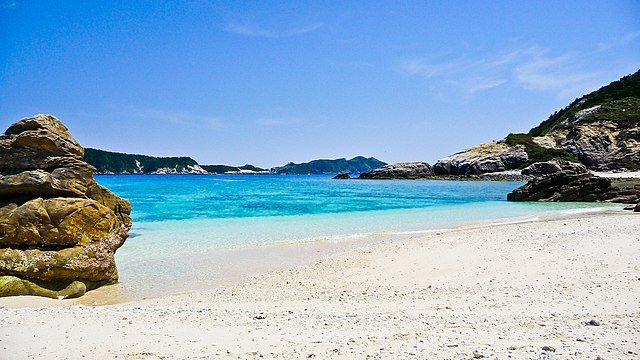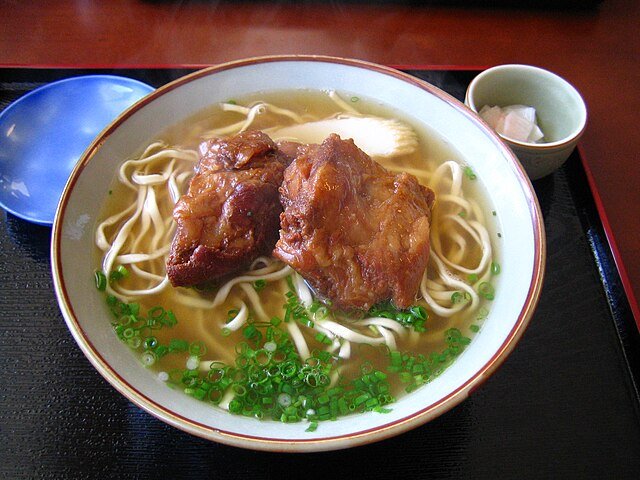Imagine this: powdery white sand under your feet, crystal-clear waters stretching for miles, and coral reefs so alive they practically dance beneath you—all without the heavy price tag or crowds you’d find in places like Hawaii. Sounds too good to be true, right?
That’s exactly what I thought… until I landed in Okinawa.
Most travelers flock to Tokyo, Kyoto, or Osaka. But hidden away in Japan’s southern waters is a place that honestly blew me away. After three unforgettable weeks island-hopping through Okinawa, I can say—without hesitation—this tropical paradise is the real deal. From swimming with manta rays to eating the freshest soba noodles in a sleepy fishing village, Okinawa stole my heart. And in this guide, I’m going to show you exactly how to plan your own adventure.
Why Okinawa Deserves a Spot on Your Bucket List
Okinawa Prefecture consists of 160 islands, with only 49 inhabited. The main island, Okinawa Honto, serves as your gateway to this aquatic wonderland, but each island offers its own personality. During my travels, I discovered why locals live some of the longest lives on Earth (spoiler: it’s not just the diet), why the coral reefs here are among the world’s most pristine, and how this former independent kingdom maintains cultural traditions unlike anywhere else in Japan.
The statistics speak for themselves: Okinawa boasts over 200 beaches, water temperatures that rarely drop below 70°F (21°C), and visibility underwater that often exceeds 100 feet. But numbers don’t capture the magic of watching sea turtles glide past ancient coral formations or the warmth of locals sharing their uchina (Okinawan) culture with curious visitors.
Best Time to Visit Okinawa (So You Don’t Get Stuck in a Typhoon)
Best Time: April-May and September-November
The sweet spot for visiting Okinawa falls during late spring and early fall. I’ve traveled here in both seasons, and each offers distinct advantages:
April-May (Peak Season)
- Perfect weather: 70-80°F with minimal rainfall
- Calm seas ideal for diving and snorkeling
- Cherry blossoms (different varieties than mainland Japan)
- Downside: Higher prices and crowds
September-November (My Personal Favorite)
- Warm water temperatures (still 77-82°F)
- Fewer tourists, better prices
- Excellent visibility for diving
- Cultural festivals throughout the islands
Avoid: June-August The rainy season (tsuyu) runs June-July, followed by typhoon season. While you might find deals, the weather can be unpredictable. I learned this the hard way during a July visit when three straight days of rain kept me landlocked.
How to Get There (Without Burning Through Your Wallet)
Flying to Naha Airport (OKA)
From Tokyo: 2.5 hours, ¥15,000-¥35,000 ($100-$230) From Osaka: 2 hours, ¥12,000-¥30,000 ($80-$200) Direct international flights from Seoul, Taipei, Hong Kong, and Shanghai
Budget Tip: Book flights 6-8 weeks in advance. Jetstar and Peach Aviation offer the cheapest options, though comfort is basic. For a small upgrade fee, ANA and JAL provide significantly better service.
Island Hopping Transportation
Once you reach Okinawa, inter-island travel becomes an adventure itself:
- Ferries: Most economical option, ¥1,000-¥8,000 depending on distance
- Small Aircraft: Faster but pricier, ¥8,000-¥15,000 per flight
- Car Rentals: Essential on main islands, ¥3,000-¥5,000 per day
Where to Stay in Okinawa (For Every Budget)
Budget Options (¥2,000-¥6,000/night)
Kanucha Bay Hostel, Nago: Where I stayed during my first visit. Clean dorms, communal kitchen, and five minutes from incredible snorkeling spots. The owner, Tanaka-san, speaks excellent English and organizes group diving trips.
Mid-Range (¥8,000-¥20,000/night)
Hotel Gracery Naha: Perfect location in downtown Naha, walking distance to Kokusai Street. Modern rooms with ocean glimpses and helpful concierge service.
Luxury (¥25,000+/night)
The Ritz-Carlton Okinawa: Golf course views, private beaches, and service that spoils you completely. Worth the splurge for special occasions.

The Ultimate Okinawa Diving Experience
Okay, this is where things get magical.
Okinawa’s waters are some of the clearest I’ve ever seen—think 100-foot visibility and over 1,000 species of fish. Whether you’re a first-timer or a certified diver, you’re in for a treat.
Best Diving Spots
Blue Cave (Maeda Point): The crown jewel of Okinawan diving. Swimming through this underwater cavern as sunlight filters through the entrance creates an almost supernatural blue glow. The cave stays at a comfortable 20 feet deep, making it perfect for beginners.
Cost: ¥8,000-¥12,000 for guided tour including equipment Best Time: Early morning (7-9 AM) to avoid crowds
Kerama Islands: A 35-minute ferry ride from Naha transports you to some of Japan’s clearest waters. During my three dives here, I encountered sea turtles, reef sharks, and coral formations that looked like underwater cities.
Manta Ray Point (Ishigaki Island): Between May and October, manta rays with 12-foot wingspans glide through these waters. Watching these gentle giants perform their underwater ballet remains one of my most magical travel moments.
Diving Costs and Certification
- Beginner Course: ¥15,000-¥20,000 (includes equipment and instruction)
- Certified Diver Guided Tours: ¥6,000-¥10,000 per dive
- Equipment Rental: ¥3,000-¥5,000 per day
- PADI Open Water Certification: ¥45,000-¥60,000 (3-4 days)
Pro Tip: Many shops offer package deals for multiple dives. Book directly with dive operators rather than through hotels for better prices.
Dive Into Okinawan Culture (Literally and Figuratively)
One of my favorite moments wasn’t at a beach—it was in a quiet village learning Eisa dancing from a group of teenagers who had more rhythm in their pinky than I have in my whole body.
Okinawa’s history as the independent Ryukyu Kingdom gives it a culture unlike anywhere else in Japan.
Traditional Experiences Worth Seeking
Eisa Dancing: These energetic drum performances happen throughout summer festivals. In the village of Kin, I joined local teenagers learning traditional rhythms – their patience with my fumbling attempts exemplified Okinawan hospitality.
Ryukyu Glass Blowing: Watch artisans create beautiful glassware from recycled bottles. The factory in Itoman offers hands-on workshops where you can create your own pieces (¥2,000-¥5,000).
Traditional Pottery: Tsuboya district in Naha maintains 300-year-old pottery traditions. Master potter Yamada-san demonstrated techniques passed down through his family for six generations.

Secret Beaches That’ll Make You Gasp
Kondoi Beach, Taketomi Island
Forget crowded resort beaches. This pristine stretch of white sand sits on an island with only 300 residents. The water shifts from turquoise to deep blue as you wade deeper, and I spent entire afternoons here seeing maybe five other people.
Access: 10-minute ferry from Ishigaki Island (¥600 each way) Best Time: Sunrise (6 AM) for complete solitude
Yonaha Maehama Beach, Miyako Island
Consistently rated among Japan’s best beaches, this 7-kilometer stretch of powder-soft sand faces crystal-clear water. The nearby reef provides excellent snorkeling without needing boat tours.
Sunset Beach, Okinawa Honto
Despite the tourist-friendly name, this beach offers stunning sunset views over the East China Sea. Local families gather here for evening picnics, creating a authentic community atmosphere.

Eat Like an Okinawan: Unique Island Flavors
Okinawan food reflects the islands’ unique history, blending Japanese, Chinese, and Southeast Asian influences. The local philosophy of “hara hachi bu” (eat until 80% full) contributes to the legendary longevity of Okinawan elders.
Must-Try Dishes
Goya Champuru: Bitter melon stir-fried with tofu, egg, and pork. Initially skeptical, I grew to love its unique flavor and cooling properties in the tropical heat.
Okinawa Soki Soba: Unlike mainland ramen, this features thick wheat noodles in light pork broth topped with tender spare ribs. Yamashiro Soba in Naha serves the island’s best version (¥800).
Taco Rice: American-influenced dish reflecting post-WWII history. Ground beef, lettuce, tomatoes, and cheese over rice – comfort food that works surprisingly well.
Orion Beer: The local brewery produces crisp, light beer perfect for beach drinking. Available everywhere for ¥200-¥400.
Food Costs
- Local restaurants: ¥800-¥1,500 per meal
- Hotel dining: ¥3,000-¥8,000 per meal
- Street food/convenience stores: ¥200-¥500 per item
- Grocery shopping: ¥2,000-¥3,000 per day for self-catering
Budgeting Your Okinawa Trip
Budget Traveler (¥8,000-¥12,000/day)
- Hostel accommodation
- Local restaurants and convenience store meals
- Public transportation and walking
- Free beaches and hiking
Mid-Range Explorer (¥15,000-¥25,000/day)
- Business hotel accommodation
- Mix of local and tourist restaurants
- Rental car for flexibility
- Paid activities like diving tours
Luxury Experience (¥30,000+/day)
- Resort accommodation
- High-end dining experiences
- Private transportation and guides
- Premium activities and spa treatments
Tips for First-Timers (From Someone Who Learned the Hard Way)
Language: English signage exists in tourist areas, but learning basic Japanese phrases helps significantly. Okinawan dialect (Uchina-guchi) differs from standard Japanese, but locals appreciate any language effort.
Currency: Cash remains king in Okinawa. Many small businesses and restaurants don’t accept cards. Withdraw cash from 7-Eleven ATMs, which work with international cards.
Weather Preparation: Pack reef-safe sunscreen (coral protection laws are strict), lightweight rain jacket, and comfortable walking shoes for coral beaches.
Cultural Sensitivity: Respect local customs, especially at sacred sites. Many locations have specific photography restrictions.
Getting Around the Islands
Okinawa Honto (Main Island) Rental car provides maximum flexibility. Traffic moves slowly, making driving relaxing rather than stressful. GPS in English available from major rental companies.
Smaller Islands Many offer bicycle rentals (¥500-¥1,000/day) perfect for their compact size. Some islands like Taketomi maintain traditional water buffalo cart tours.
Ferry Schedules Inter-island ferries run regularly but check schedules carefully. Weather can cause cancellations, especially during winter months.
FAQs About Traveling to Okinawa
Q1. Do I need to speak Japanese to visit Okinawa?
Not at all, but learning a few basic phrases will definitely help. Most tourist areas have English signage.
Q2. Is Okinawa safe for solo travelers?
Absolutely. I felt super safe the entire time—even when exploring remote islands solo.
Q3. Can I visit Okinawa on a tight budget?
Yes! Hostels, street food, and ferries make Okinawa surprisingly budget-friendly.
Q4. What’s the best island for first-time visitors?
Start with Okinawa Honto for convenience, then add a side trip to Ishigaki or Miyako for nature and beaches.
Q5. Is Okinawa family-friendly?
Totally. With calm beaches, cultural activities, and nature everywhere, it’s great for kids (and kids-at-heart).
Your Okinawa Adventure Starts Now
You’ve read this far, so I know you’re curious. And trust me—Okinawa is the kind of place you won’t just visit once. It’s the kind of place that stays with you.
Whether you’re diving into coral caves, sharing beers with locals on the beach, or learning ancient dance moves under the stars—this island will change the way you see Japan (and tropical travel in general).
So what are you waiting for?
Book that flight.
Pack your flip-flops.
Get ready for the adventure of a lifetime.
良い旅を

